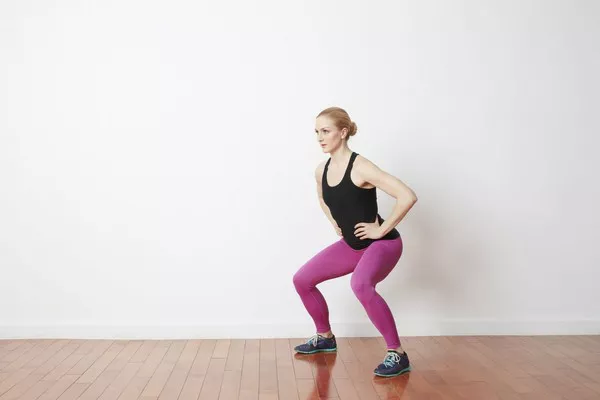Squats are a fundamental compound exercise that engages multiple muscle groups and is a staple in any effective workout routine. From beginners to seasoned athletes, mastering the squat can lead to improved strength, mobility, and overall fitness. However, proper form and technique are crucial to maximize the benefits and prevent injury. In this comprehensive guide, we will delve into the step-by-step process of performing squats correctly, from preparation to execution.
Understanding the Squat
Before diving into the steps of performing a squat, it’s essential to understand the muscles involved and the biomechanics of the movement. Squats primarily target the quadriceps, hamstrings, glutes, and lower back muscles. Additionally, they engage the core for stability and balance.
The squat movement involves bending the knees and hips while maintaining a neutral spine position. It’s vital to ensure that the knees track over the toes and do not collapse inward to prevent undue stress on the knee joints. Proper breathing technique and bracing the core are also key components of a successful squat.
Step-by-Step Guide to Performing Squats
1. Warm-Up
Before starting any exercise, including squats, it’s essential to warm up the muscles and joints to reduce the risk of injury. Perform dynamic stretches such as leg swings, hip circles, and bodyweight squats to increase blood flow and mobility.
2. Set Up Properly
Stand with your feet shoulder-width apart, toes slightly turned out, and your weight evenly distributed across your feet. Engage your core muscles by pulling your belly button towards your spine, and maintain a neutral spine position with your chest up and shoulders back.
3. Initiate the Movement
Begin the squat by pushing your hips back and bending your knees simultaneously. Imagine sitting back into a chair, keeping your weight on your heels, and lowering your body towards the ground.
4. Lower Yourself Down
Continue descending until your thighs are parallel to the ground or as low as comfortably possible while maintaining proper form. Keep your chest lifted, and avoid rounding your back or allowing your knees to collapse inward.
5. Maintain Control
As you reach the bottom of the squat position, pause briefly to ensure control and stability. Focus on keeping your knees in line with your toes and your weight evenly distributed across your feet.
6. Drive Through Your Heels
Initiate the upward movement by pressing through your heels and driving your hips forward. Keep your chest lifted and maintain tension in your core muscles throughout the ascent.
7. Extend Your Hips and Knees
As you rise from the squat, extend your hips and knees simultaneously until you return to the starting position. Keep the movement smooth and controlled, avoiding any jerky or abrupt motions.
8. Repeat
Once you reach the top of the squat, you can either pause briefly or immediately begin the next repetition. Aim for a controlled and steady pace, focusing on maintaining proper form with each repetition.
9. Breathing Technique
Coordinate your breathing with the squat movement to maximize efficiency and stability. Inhale as you lower yourself into the squat position, and exhale as you drive through your heels to return to the starting position. Remember to maintain abdominal bracing throughout the movement to support your spine and core.
10. Common Mistakes to Avoid
Leaning Too Far Forward: Maintain an upright torso throughout the squat to prevent excessive strain on your lower back.
Knees Collapsing Inward: Ensure that your knees track over your toes throughout the movement to prevent injury and maintain proper alignment.
Not Reaching Full Depth: Aim to lower yourself until your thighs are parallel to the ground or below to maximize muscle engagement.
Rounding the Back: Keep your spine neutral throughout the squat to avoid undue stress on your spine and maintain proper form.
Conclusion
Mastering the squat requires practice, patience, and attention to detail. By following the step-by-step guide outlined in this article and focusing on proper form and technique, you can safely and effectively incorporate squats into your workout routine. Whether you’re a beginner or an experienced lifter, the squat is a versatile exercise that can help you build strength, improve mobility, and enhance overall fitness levels.
[inline_related_posts title=”You Might Be Interested In” title_align=”left” style=”list” number=”6″ align=”none” ids=”8922,8841,8838″ by=”categories” orderby=”rand” order=”DESC” hide_thumb=”no” thumb_right=”no” views=”no” date=”yes” grid_columns=”2″ post_type=”” tax=””]

































